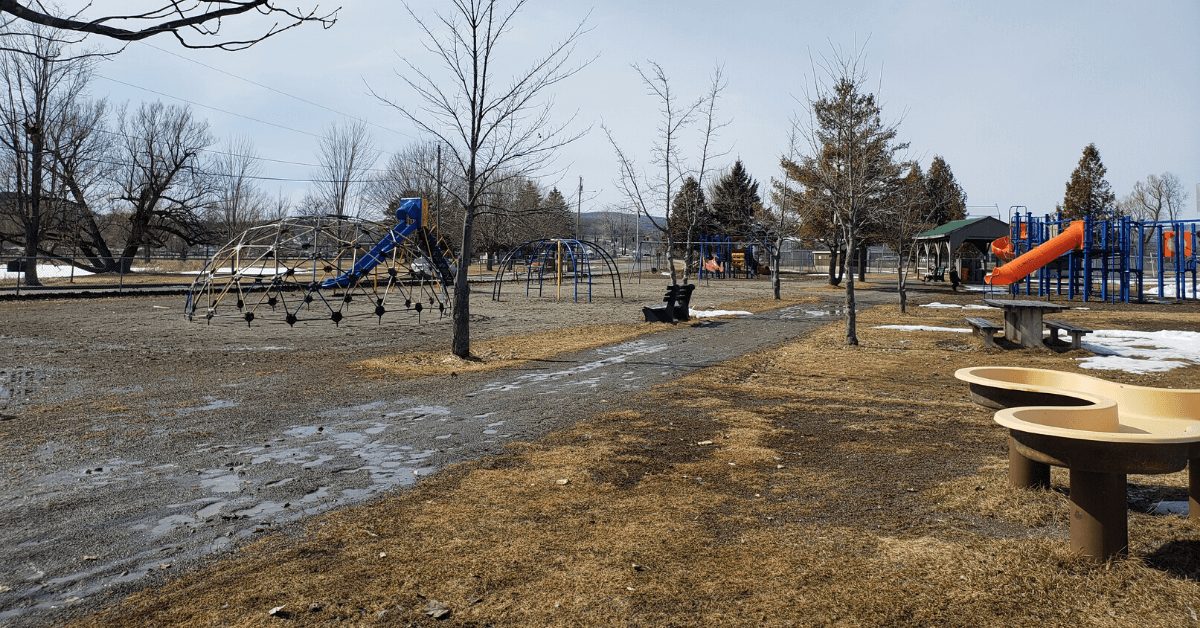NEWPORT — The Gardner Park Playground and Splashpad Project is progressing into the permitting and design phase.
The $598,000 project is currently 75 percent funded after a series of grants, fundraisers, and donations.
Jessica Booth, Director of Parks and Recreation for the City of Newport, says that with much of the conceptual work complete, they’re starting to dig into technical details and figuring out what exactly needs to be done.
“Given the less glamorous historic land use of the property, we expected some environmental challenges would arise as the project moves toward implementation,” Booth said.
While Gardner Memorial Park has been active with recreation and public use for decades, the site was at one time a swampy dumping ground in the early 1920s.
A Phase I Environmental Site Assessment conducted last September confirmed that the undocumented fill material used to develop the park in the 1930s and the dumping that occurred prior, are environmental issues of concern that need to be addressed.
Booth says that being proactive to eliminate health risks is a responsibility they’re taking seriously.
“Better understanding of soil contaminants may add complexity to the restoration project, but it also represents an opportunity for us to learn more about the conditions at our park and how we can improve the important asset for future generations to enjoy.”
A limited Phase II Environmental Site Assessment, which included fieldwork to further assess soil and water quality near the playground and Skate Shack, was conducted over the winter to gather more information.
Results from soil and groundwater samples taken in eight locations confirmed the presence of elevated levels of arsenic, lead, and other contaminants in the areas surveyed.
Lynda Provencher with the Vermont Department of Environmental Conservation Waste Management And Prevention Division reviewed the findings and compared them to the State’s regulatory standards.
“The type of contaminants and concentrations detected are indicative of a property that may have been a former landfill and where industrial facilities are located nearby,” Provencher said. “While the thresholds are above state standards, their presence is not unexpected given the history of the park, and are certainly not uncommon in Vermont and elsewhere.”
Because the full extent of soil and groundwater impacts could not be defined through the Phase II Assessment, additional soil and groundwater sampling in other areas of the park is now required before appropriate pre-construction mitigation measures can be evaluated.
The next step in the testing process is a Supplemental Phase II Environmental Site Assessment that includes seven additional soil and nine additional water testing sites around the playground and surrounding ball fields.
A $50,000 cost estimate includes field testing and proposed remediation recommendations that will be required as part of a Corrective Action Plan for the State of Vermont.
The additional testing represents an unanticipated expense for the playground project.
Irene Nagle, Senior Planner for Northeastern Vermont Development Association (NVDA) has been working with the city to bring the project forward and identify possible funding sources to help cover the cost of testing.
“This situation is not unique to Newport and comes up frequently when undertaking redevelopment projects on properties that have been used by the public for centuries,” Nagle said.
She says that Newport is in a good position to secure additional funds from both private and public sources to cover this expense.
The city has applied for funding to cover the next phase of testing through the EPA Brownfields Targeted Assessment Grant.
If awarded, assessment work could be underway as early as June.

